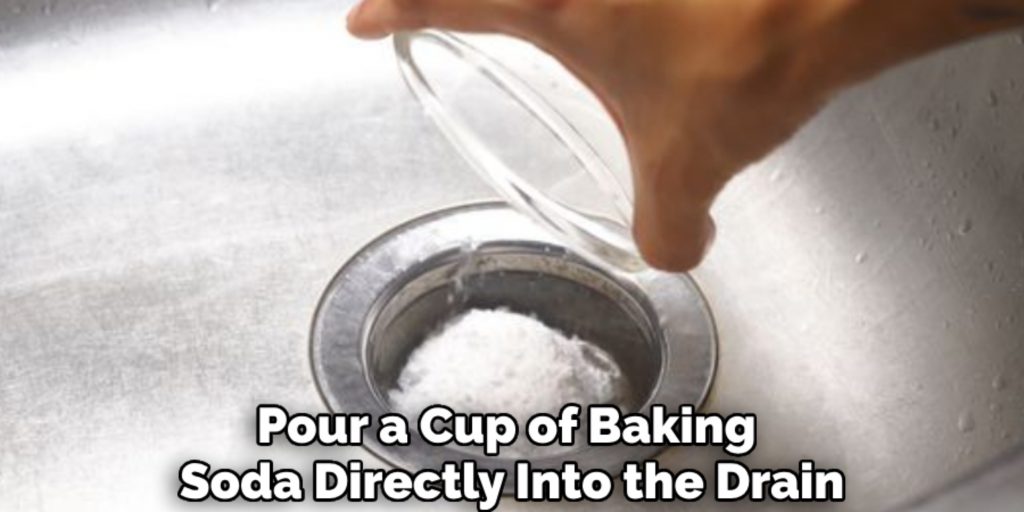Maintaining clean drain pipes is crucial for a healthy home environment, yet many homeowners face the issue of black sludge buildup. This black sludge is often the result of various materials converging in the pipes, creating clogs and hindrances to smooth drainage.

Common culprits contributing to this unsightly problem include soap scum, grease, hair, and organic matter that decomposes over time, leading to slow drainage and foul odors in the plumbing system. In this article, we will delve into how to remove black sludge from drain pipes effectively, exploring the necessary tools and methods.
Additionally, we will highlight preventive measures that can help avoid the recurrence of this issue, ensuring your pipes remain clear and functional. Taking proactive steps will improve your home’s drainage system and enhance your overall living experience.
Understanding the Causes of Black Sludge
Black sludge in drain pipes is primarily the result of several common materials accumulating and combining to form a toxic mix. Recognizing these causes is essential for effective removal and prevention strategies.
Soap Scum and Grease
Soap scum, produced when soap mixes with hard water, adheres to the insides of pipes. When combined with grease from cooking or skin oils, this scum forms a sticky residue that clings to the pipe walls, narrowing the passageway for water flow.
As more soap and grease are introduced over time, the residue thickens, creating an environment that fosters the accumulation of additional waste. This interplay hinders drainage and contributes to the development of foul odors emanating from the pipes.

Hair and Organic Matter
As soap scum and grease accumulate, hair and organic matter, such as food particles, find their way into the mix. Hair naturally enters the drain during washing or grooming, while organic matter often comes from food preparation and disposal.
These materials can easily become trapped in the sticky residue of soap scum and grease, leading to further clogs. Over time, the trapped organic matter decomposes, contributing to the formation of black sludge. This build-up creates a vicious cycle, leading to more severe drainage issues if left unaddressed.
Safety Precautions
Protective Gear
When tackling black sludge removal, it is crucial to wear protective gear. Always use durable gloves to shield your hands from direct contact with harmful bacteria or chemicals that may be present in the sludge. In some cases, wearing a mask can protect against potential inhalation of unpleasant or harmful substances.
Ventilation
Ensure that the area is well-ventilated before using any chemical cleaners. Open windows and doors to create airflow, which helps to disperse any fumes that may be released during the cleaning process. Proper ventilation prevents respiratory irritation and ensures a safer cleaning environment.
Avoiding Damage to Pipes
Exercise caution when selecting cleaning methods, especially regarding the use of harsh chemicals or aggressive tools. Overly strong cleaners or abrasive tools may damage older pipes or those made from sensitive materials, leading to more significant issues down the line. Opt for gentle yet effective alternatives to protect your plumbing system.

Tools and Materials Needed
Having the right tools and materials is essential for effective cleaning when removing black sludge from drain pipes.
Basic Tools
To tackle this task, you’ll need a few essential tools: a drain snake for dislodging clogs, a plunger to help clear blockages, a bucket to catch any runoff during the cleaning process, and old towels or rags for cleanup. These tools will aid in both removing the sludge and maintaining a cleaner workspace.
Cleaning Agents
Consider using natural options like baking soda and vinegar for cleaning agents, which effectively break down sludge and neutralize odors.
Additionally, commercial drain cleaners can provide quick results for more stubborn buildup, while enzymatic cleaners are excellent for preventing further accumulation by digesting organic matter over time. Choosing the right cleaning agent can significantly enhance your efforts in maintaining clear drain pipes.
How to Remove Black Sludge from Drain Pipes Manual Removal with a Drain Snake
Step 1: Prepare the Area
Before commencing with the manual removal of black sludge, it’s important to prepare the area properly. Begin by placing a bucket under the drain trap to catch any water or sludge that may spill out during the process.
Lay down old towels around the area to absorb any potential mess and protect your surfaces. Additionally, remove any visible debris from the drain opening to create a clearer working space. This preparation will help you work more efficiently and keep your environment tidy.

Step 2: Remove the Drain Trap
Next, you will need to remove the drain trap, commonly known as the P-trap or U-bend, located under your sink. Carefully unscrew the nuts connecting the trap to the pipes using an adjustable wrench.
Once loosened, gently pull the trap away from the piping to access the accumulated sludge. Having your bucket beneath the trap is a good idea, as residual water will likely drain into it. After removing the trap, clean it thoroughly using a small brush or cloth to eliminate any built-up residue before proceeding to the next step.
Step 3: Use a Drain Snake
Now that the drain trap is removed, you can effectively tackle the sludge using a drain snake. Begin by inserting the end of the snake into the pipe leading further down. Gently twist and push the snake as you guide it deeper into the pipe.
Working the snake through the pipe will help break up and dislodge the sludge buildup. Make sure to crank the snake’s handle while moving it in and out to maximize its effectiveness. Continue this process, occasionally extracting the snake to inspect for debris. Repeat until the snake emerges clean, indicating that the sludge has been thoroughly removed from your drainpipe.
Step 4: Reassemble and Test
After successfully clearing the sludge, it’s time to reassemble your drain trap. Align the trap properly with the pipes and securely tighten the nuts with your wrench to avoid any leaks.
Once reassembled, run water through the drain to ensure it flows freely. Take a moment to inspect the area for any leaks at the connections, ensuring a secure and effective drain system. If everything looks good, you’ve successfully removed the black sludge!
How to Remove Black Sludge from Drain Pipes Using Baking Soda and Vinegar
Step 1: Pour Boiling Water
Begin by boiling a water kettle and carefully pouring it down the drain. This initial step is crucial as the hot water helps to melt away any existing grease and loosens the sludge, making it easier for subsequent treatments to work effectively. Pour slowly and deliberately to avoid splashing, and ensure that the hot water reaches as deep into the pipes as possible.
Step 2: Apply Baking Soda and Vinegar
Next, pour a cup of baking soda directly into the drain. Follow this with a cup of vinegar, which will cause a fizzy chemical reaction. This reaction creates carbon dioxide, which helps to agitate and break apart the accumulated sludge and grime.
Allow this mixture to sit and work its magic by covering the drain with a stopper or cloth and letting it sit for 15 to 30 minutes to maximize its effectiveness. The fizzing action not only helps to dislodge buildup but also neutralizes any unpleasant odors.

Step 3: Flush with Hot Water
After the waiting period, it’s time to flush the drain. Boil another kettle of water and pour it down the drain once more. This step rinses away the remnants of the baking soda and vinegar solution, carrying off any dislodged particles and further cleaning the pipes. Ensure that you pour the water slowly to give it time to wash through the sludge effectively.
Step 4: Repeat if Necessary
If you find that the drain remains slow or sludge is still visible, it may be necessary to repeat the process. Sometimes, a second application of baking soda and vinegar can provide the additional cleaning power needed to thoroughly clear the drain. Don’t be discouraged; persistence is key in managing stubborn blockages.
Enzymatic Cleaners
Step 1: Choose the Right Product
Select a product specifically designed to break down organic matter without damaging your pipes to effectively use enzymatic cleaners. Check the label for compatibility with the type of pipes you have to ensure that the cleaner will be safe and effective for your plumbing system.
Step 2: Apply the Cleaner
Once you have the right enzymatic cleaner, follow the manufacturer’s directions for application. Typically, this involves pouring the recommended amount of cleaner directly into the drain. Let it sit for several hours or, for optimal results, overnight, to allow it to work its way through the pipes.
Step 3: Flush with Water
After the enzymatic cleaner has had time to do its job, flush the drain with warm water. This step is crucial as it helps to remove any remaining debris and residues from the cleaner, ensuring your pipes are clear and functioning optimally.
Preventing Future Black Sludge Buildup
Regular Cleaning
Establish a regular cleaning routine to keep drains clear and prevent black sludge from forming. Monthly flushing with hot water followed by a mixture of baking soda and vinegar can help maintain a clean drainage system. This simple practice aids in breaking down any potential buildup and ensuring a smooth flow through your pipes.
Use Drain Screens
Implementing drain screens or filters is an effective way to catch hair, food particles, and other debris before they have a chance to accumulate in the pipes. These tools are inexpensive and easy to install, providing an additional layer of protection against clogs and reducing the risk of sludge buildup.
Avoid Pouring Grease Down the Drain
Avoid pouring grease, oils, or fatty substances down the drain to significantly decrease the likelihood of sludge buildup. These materials can solidify and create obstructions within the pipes, leading to inconvenient and potentially costly plumbing issues. Instead, dispose of these materials in the trash to clear your drains.

Conclusion
In summary, there are several effective methods on how to remove black sludge from drain pipes, ranging from manual interventions such as using a drain snake to natural solutions involving baking soda and vinegar and even enzymatic cleaners.
Each approach serves to tackle the sludge buildup in distinct ways, ensuring your plumbing remains functional and clean. It’s essential to incorporate regular maintenance practices, such as monthly hot water flushes and using drain screens to prevent debris accumulation.
Additionally, be mindful of what goes down your drains; avoiding grease or fatty substances can significantly reduce the risk of future clogs. By addressing these common issues promptly, you can maintain a healthy plumbing system, ensuring that your drains remain efficient and clear of sludge for years to come.

